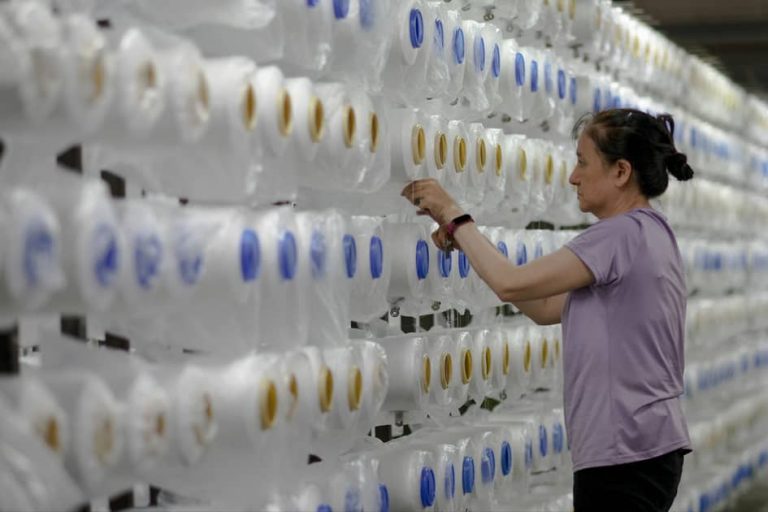Taiwan – Oyster shells, used for centuries for their insulating properties, are now being repurposed to create a unique, eco-friendly fabric in oyster-farming western Taiwan.
Entrepreneur Eddie Wang remembers the clam shells that covered the streets of his hometown in the western Yunlin district, which locals used to insulate their homes. “They burned the shells and applied the residue to the walls. The houses were warm in winter and cool in summer,” the 42-year-old Taiwanese told AFP news agency at his factory in Tainan, in the island’s southwest. “So I was curious to know why oyster shells had such a miraculous effect.”
His company Creative Tech Textile, founded in 2010, produced an “eco-friendly fabric,” a polyester made from recycled plastic bottles, but Wang found it “ordinary.” With his childhood memory in mind, he then collaborated with a research institute to experiment with making fabric from discarded oyster shells. Their research culminated in 2017 with the discovery of a process for creating a wool-like material.
Today, his factory in Taiwan uses about 100 tons of the protective shells a year to produce about 900 tons of “Seawool,” a patented and trademarked fabric. The fabric and garments made from it generate about 220 million Taiwanese dollars (6.2 million euros, 6.8 million dollars) a year, purchased primarily by sustainable and outdoor clothing brands in Europe and the United States. Producing this wool in Taiwan wouldn’t be possible without the island’s unique oyster farming industry, Wang said.
‘Magic wool’
“You don’t find this industrial chain anywhere else in the world,” the entrepreneur says. “We have people to harvest the oysters, we have people to clean the oyster shells, and we have people to dry and calcinate (treat) the shells,” he says.
The island of Taiwan has a voracious appetite for the mollusks, harvesting some 200,000 tons each year, which are mostly eaten locally, in crispy oyster omelets or noodle dishes. Their popularity also means that about 160,000 tons of the bivalve shells are discarded each year, according to the Ministry of Agriculture. They pile up on the streets of oyster-farming towns, mainly in the western Taiwanese counties of Yunlin, Changhua and Chiayi, where they give off a lingering fishy smell and provide breeding grounds for mosquitoes.
At Wang’s factory, the shells are ground into small beads, which are then mixed with yarn made from recycled plastic bottles. “This creates a magical wool,” he said. “Oyster shell is a material with low thermal conductivity — it doesn’t absorb or dissipate heat.” A half-hour drive from the entrepreneur’s store, where he displays his sports jackets and tracksuits, state-owned Taiwan Sugar Corporation (TSC) also has a factory that grinds the shells into a powder, which is used to make household products such as incense sticks.
The ground calcareous shells help reduce the smoke and toxicity of burning incense, said Chen Wei-jen, deputy head of TSC’s biotechnology department. “We hope oyster shells can have industrial applications, and interested companies can use them as raw materials to make their products more environmentally friendly” and add value, Chen said.
‘Turned into gold’
Before they can be eaten and their shells used by industry, the bivalves are first harvested at dawn in the oyster-farming district of Chiayi from cages set up along the coast. They are sorted before being sent to factories such as that of entrepreneur Dai Sen-tai, where machines clean them. They are then sent to small family farms that shuck them and send the empty shells further south.
Dai is a third-generation oyster farmer, and he is happy that Taiwan is finding a new life for this marine waste. “When I was little, nobody wanted oyster shells. They were just dumped and left everywhere,” he told AFP. “It is a good thing that this waste is now being turned into gold.”


